First There Was Decoration Day
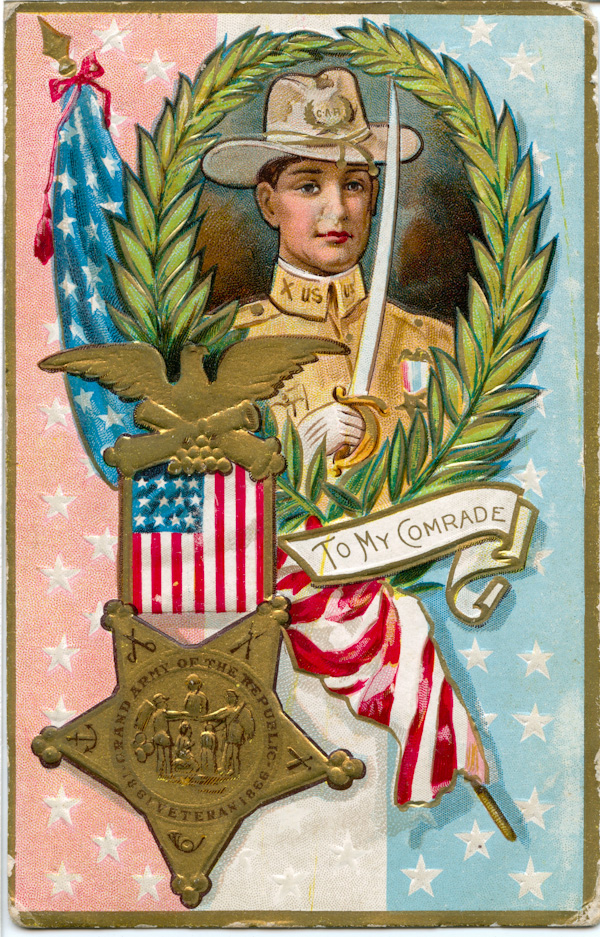
This 1909 Decoration Day postcard depicts a U.S. Army vet, sabre in hand to salute his fallen comrades. The Grand Army of the Republic, as the Union Army was known, is celebrated in the five-star membership badge of the G.A.R.
According to a 1910 history of the G.A.R, the badge was “struck from captured Confederate cannon” and the bronze “issued to the G.A.R. by the War Department as needed.”
The design includes motifs representing charity, liberty, loyalty, and fraternity surrounded by the insignia of the various branches of service — bugle (infantry), crossed cannons (artillery), crossed muskets (marines), crossed sabers (cavalry), and anchor (sailors).
The design was adopted in 1866, revised in 1868 and again in 1869. A few changes were made again in 1873 and 1886. This postcard dates from 1909 per the postmark, and probably shows the latest medal design.
Shortly after the conclusion of the Civil War, communities began commemorating the fallen soldiers by decorating graves with flowers. General John A. Logan of the Grand Army of the Republic proclaimed the first major observance May 30, 1868, held at Arlington National Cemetery where both Union and Confederate graves were decorated.
The same fascination with symbolism that created the G.A.R. medal is evident in the postcard design in these examples.
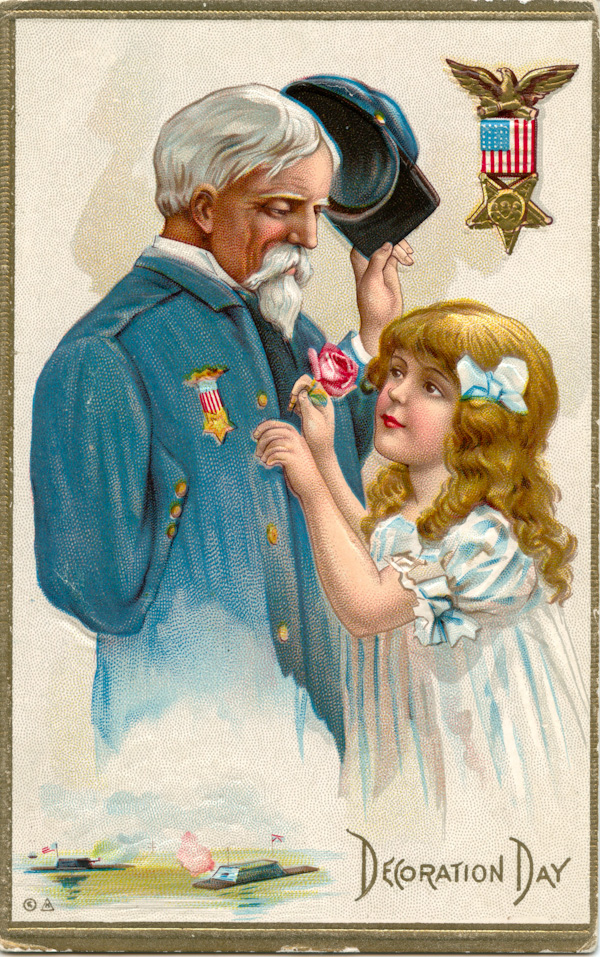
In this illustration a young child, probably a granddaughter, slips a flower in the lapel of her grandfather. He wears the G.A.R. veteran medal on his coat near the pinned sleeve, silent testament to his loss in the war.
In the bottom left of the card is an artist’s version of the famous battle in March 1862 between the first iron-clad warships, the USS Monitor and the CSS Virginia. The battle ended in a stalemate, but introduced a new phase of warfare to America.
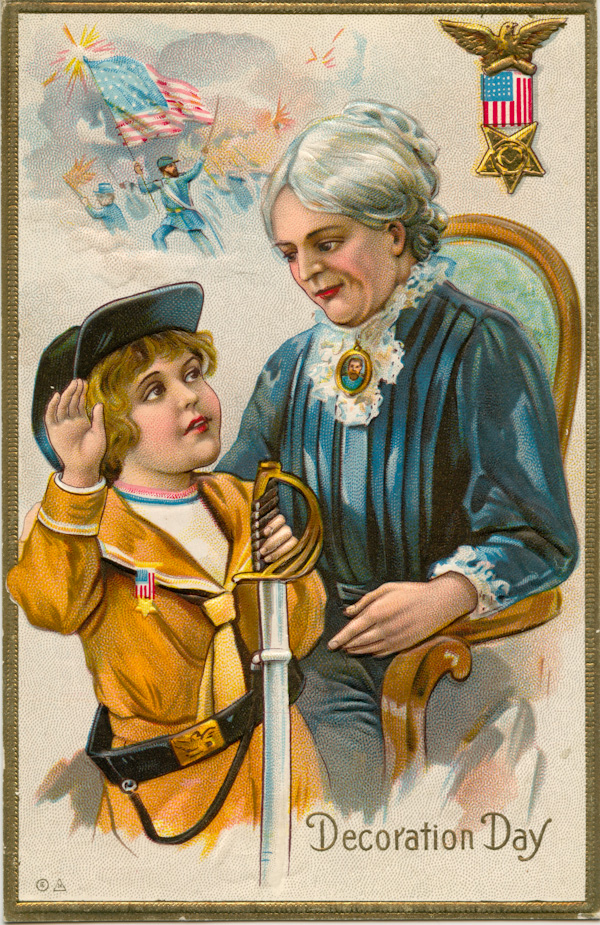
This postcard obviously continues the series shown above, but the painterly scene on this card recalls the infantry’s efforts in the war, in the same way that the previous card depicted naval war maneuvers. Presumably, other cards in the series pay homage to other branches of service. It would be interesting to locate other cards in the series and see the entire set together.
The main image shows a war widow (note the grandmother’s photo cameo brooch) with her grandson who playing at being a soldier. He wears a miniature G.A.R. medal, a too-large belt, and is holding his grandfather’s saber.
And Then There Was Memorial Day
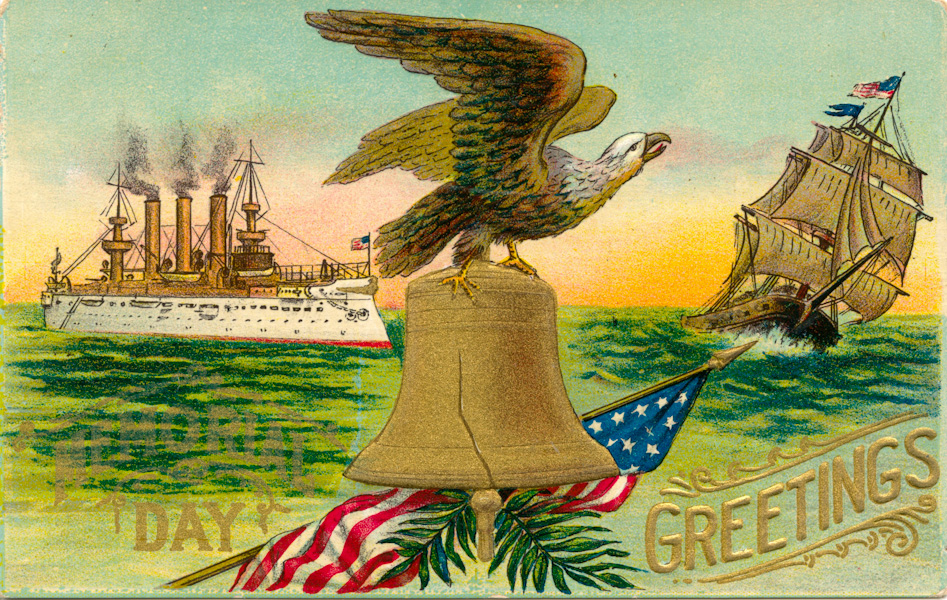
This Memorial Day card bears a postmark on the reverse of 1908; it seems that the holiday was known by both names. The images here are probably meant to depict the new and old Navy warships. The card sends “Memorial Day Greetings” rather than a message for “Decoration Day,” although the term Memorial Day did not become official until 1966.
I found these cards at a local Vintage Paper and Ephemera Show in Southern California. If you love family history, and haven’t discovered these shows yet, you are missing out!
Sources:
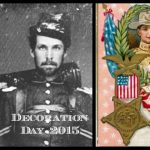

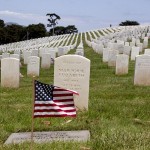



This is all new information to me, and I am happy to learn the history of Memorial Day. I didn't realize it was so late, 1966, before it became official. That seems very close to the time of the Vietnam War protests. I wonder if there is some connection there — was naming Memorial Day a reaction to the protests??
That's a touching picture of the little girl and the grandfather who lost his arm in defense of her safety.
What a delightful post! I really enjoyed viewing the vintage post cards!